Wednesday 30th November
After finding more black smokers last night, HyBIS continued north during the small hours of the morning, eventually encountering cold, old seafloor with no signs of vent activity in the area.
At 3:30 a.m., we started to bring HyBIS back up to the ship from 2.7 kilometres below us. By 4:50 a.m. she was secured on deck, and Voyage 67 of the RRS James Cook officially over. The ship started to slip through the slick grey sea to her next destination, and continue Alex Rogers' project studying seamounts in the Indian Ocean.
So what did we find in our intense 72 hours investigating the first known vent field on the SW Indian Ridge? To understand the marine life that we have found here, it is worth having a quick recap of what lives at vents found in neighbouring parts of the ocean.
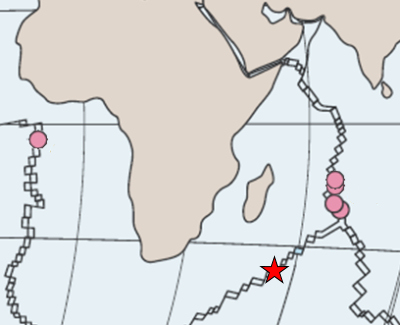
The SW Indian Ridge joins the Mid-Atlantic Ridge to the Central Indian Ridge. At the vents found so far along the Mid-Atlantic Ridge, the most abundant animals include mussels, shrimp, and anemones. At vents seen so far on the Central Indian Ridge, there are scaly-foot snails, hairy snails, mussels, stalked barnacles, and other species of shrimp and anemones.
At the Dragon Vent field, we found scaly-foot snails and shrimp in the hottest habitat around the black smokers. On first inspection, the scaly-foot snails show some differences to those from the Central Indian Ridge, and we will need to check whether they might be a new species. The shrimp look similar to those already known, but they are not here in the same numbers as at the vents of the Central Indian Ridge.
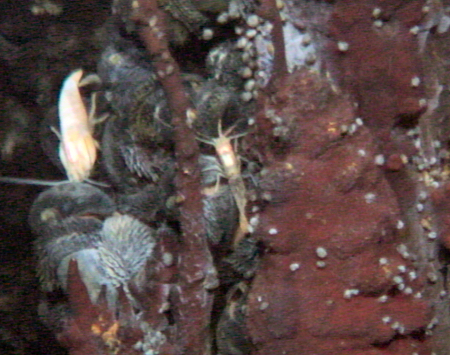
Vent shrimp and scaly-foot snails,
on the side of a black smoker chimney
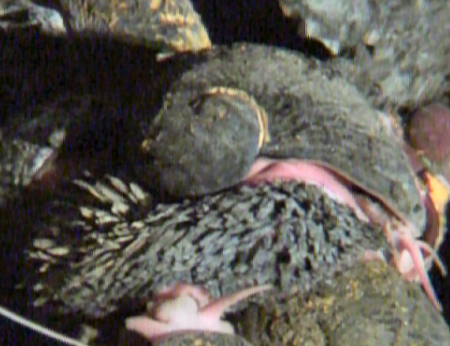
Close-up of a scaly-foot snail
But there was a big surprise lurking among the snails and shrimp: "yeti crabs", completely unlike the species described from vents in the Pacific, and not known at Mid-Atlantic or Central Indian vents.
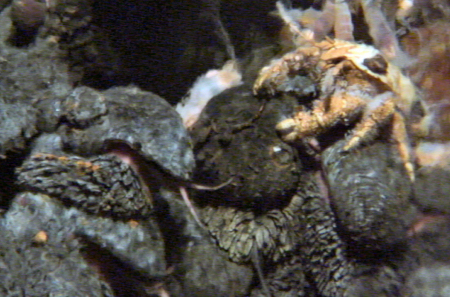
Yeti crab clambers over a scaly-foot snail
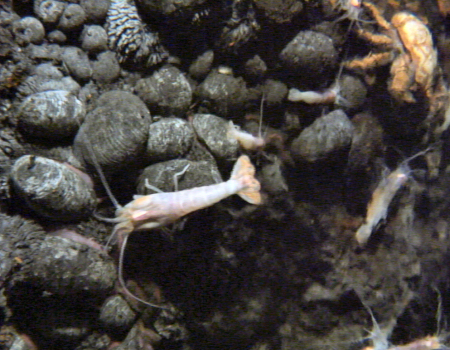
Rimicaris shrimp (centre) meets Kiwa yeti crab (top right):
first time seen together at vents
Next to the scaly-foot snails and shrimp, we found mussels and another species of snail with smooth brown shells. And yet another surprise: a pale, snake-like species of sea cucumber, entwined around sulfide spires of the chimneys. Sea cucumbers are only previously known from vents in the Pacific.
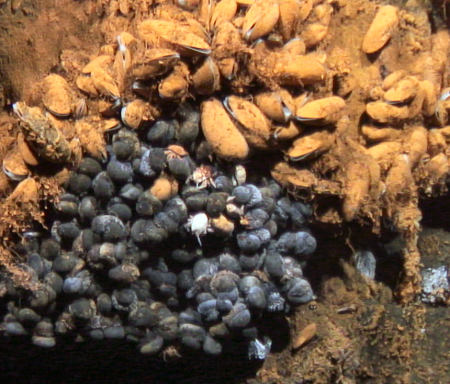
Mussels above the scaly-foot snails
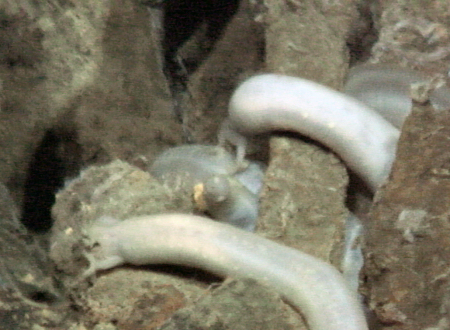
Sea cucumbers wrapped around vent chimney
The less active vent structures are festooned with stalked barnacles, and dotted with anemones. Where mussels are dying off as venting wanes, large whelks also move in to feast. We also found several different species of polychaete worms in the different habitats around the vents.
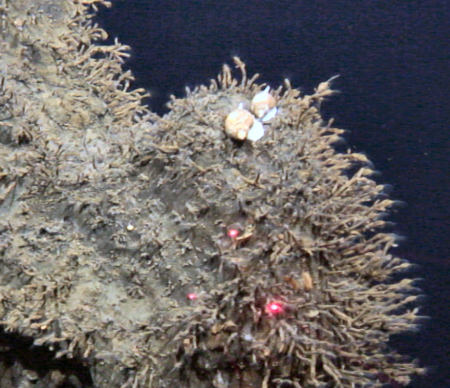
Stalked barnacles on a less active vent
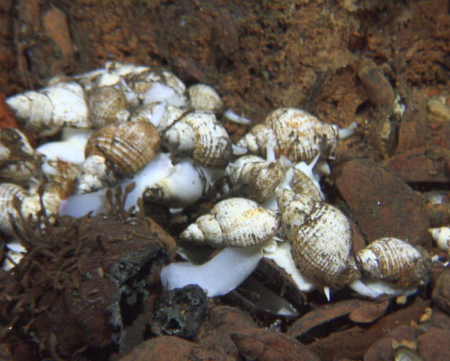
Whelks gathering at dead mussel shells
We will need to analyse our specimens thoroughly back home, but on first inspection there appear to be several new species here. Some may be related to those from the Mid-Atlantic and Central Indian vents, but perhaps most importantly, some of the types of animals living here, such as the yeti crabs and sea cucumbers, are not known at all from vents in those neighbouring areas.
So the next question is: why are there these difference in the marine life here? Do ocean currents isolate this area from the others? Are we seeing the results of a difference in volcanic activity, and potential greater distance between vent fields, on the SW Indian Ridge? Or do the vents here differ in chemistry, given their unusual shapes and colours?
Collecting samples and data from the ocean floor is just the start of our investigation, and further analyses back in the lab will tackle those questions. Until we have completed that work, and had our results checked by other scientists, it would be premature to jump to conclusions.
There is one thought that strikes us, however, as we leave these vents behind on our journey. If there are several new species here, then right now the few square hundred metres of the Dragon Vent Field are their only known habitat in the entire world. There will certainly be more colonies at other vents along the SW Indian Ridge, but for now we don't know where, or how interconnected their populations are. The impacts of exploratory mining here, licensed earlier this year by the International Seabed Authority, will be uncertain until we have that knowledge.
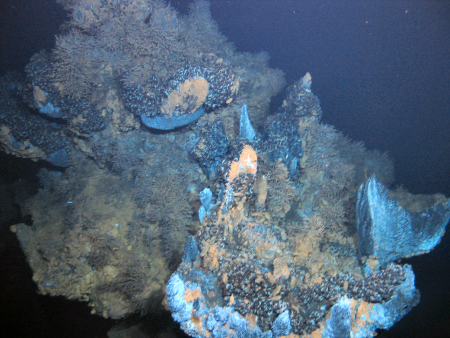
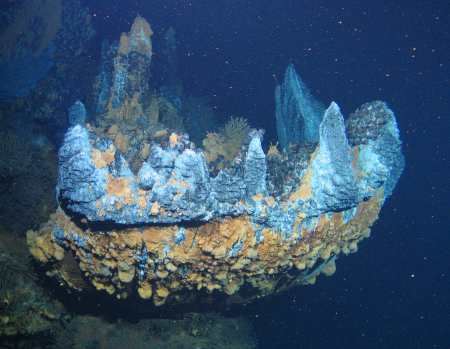
Vistas from the Dragon Vent Field: "Tiamat's Claw"
As always, none of our science out here would have been possible without the effort and excellent support of the ship's company, technicians, and science party from the seamounts project aboard. We are grateful to all our shipmates for their hard work in helping us obtain another missing piece in the global "jigsaw puzzle" of life at deep-sea vents.
Footage from the first ROV dives at the Dragon Vent Field
